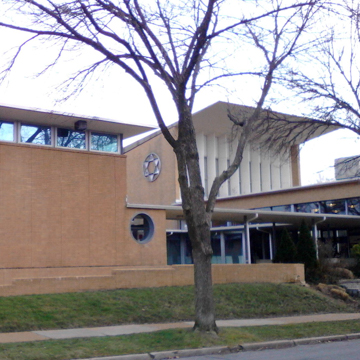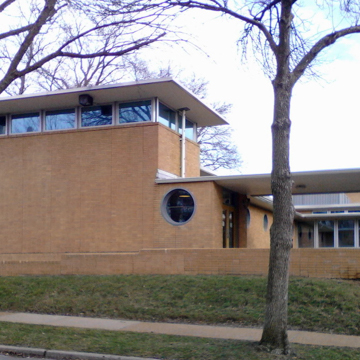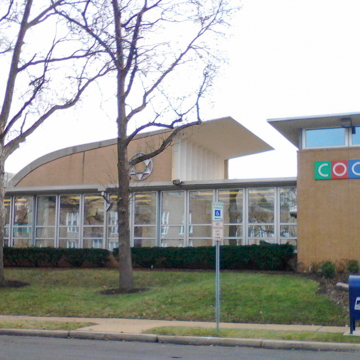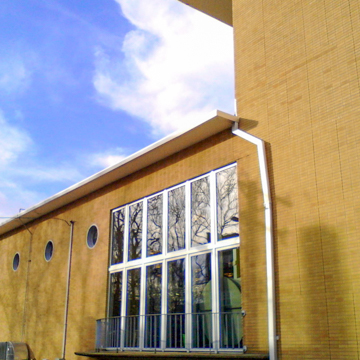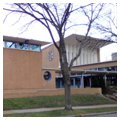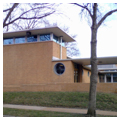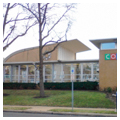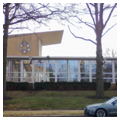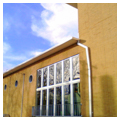You are here
Center of Contemporary Arts
Designed for Congregation B'nai Amoona, this modernist synagogue constructed of concrete block faced with buff-colored brick contains a sanctuary, assembly hall, and classrooms organized around a courtyard. The architect fulfilled the congregation's request for a flexible plan by including moveable walls in the sanctuary and assembly room that could be opened to accommodate large gatherings. Most striking is the flight of the parabolic roof, constructed of steel beams and a reinforced concrete shell, a span that cantilevers out over the sanctuary's glass wall. A previous client of Mendelsohn's, who had moved from Poland to St. Louis, and the impact of the lectures the architect gave at the City Museum in 1944 led to the commission. The synagogue, one of the German immigrant's last designs before his death in 1953, was converted into a cultural center (COCA) following the congregation's move to a new building at 324 S. Mason Road in west St. Louis County in 1986. That building by Hellmuth, Obata and Kassabaum is based on a hexagon, with canted hallways that open into a spacious sanctuary, light-filled by clerestories, one atop another.
Writing Credits
If SAH Archipedia has been useful to you, please consider supporting it.
SAH Archipedia tells the story of the United States through its buildings, landscapes, and cities. This freely available resource empowers the public with authoritative knowledge that deepens their understanding and appreciation of the built environment. But the Society of Architectural Historians, which created SAH Archipedia with University of Virginia Press, needs your support to maintain the high-caliber research, writing, photography, cartography, editing, design, and programming that make SAH Archipedia a trusted online resource available to all who value the history of place, heritage tourism, and learning.

